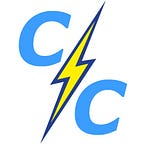Clean energy is setting records in 2020
Friends,
This year has undoubtedly set records for the use of the word “unprecedented.” Yet, despite the many challenges of 2020, clean energy is also setting records.
The pandemic, combined with yet another severe wildfire season in the Western US, has only increased interest in the unparalleled resilience benefits provided by renewables-driven microgrids. But while everyone understands the significant value of this resilience, quantifying its value has proven elusive — until now.
In 2020, the Clean Coalition made it simple to value resilience with our straightforward and streamlined value-of-resilience methodology: VOR123. In developing VOR123, we began by tiering electric loads into three tiers — critical, priority, and discretionary — regardless of facility type and/or location. We then determined a standardized VOR for each of the three load tiers, based on levels of anticipated resilience.
By combining the VOR associated with each load tier at a typical facility, we arrived at a standard load-tiering allocation and an overall VOR that is worth a 25% adder to a facility’s electricity bill.
Read more about our value-of-resilience methodology, VOR123.
Given that a desire for resilience is often the main driver for installing Solar Microgrids, a standardized VOR is key to unleashing Solar Microgrids broadly. We put VOR123 to the test in 2020 with a number of projects, including the Santa Barbara Unified School District (SBUSD) Solar Microgrids. These Solar Microgrid building blocks will help realize the Clean Coalition’s vision for the broader Goleta Load Pocket Community Microgrid (GLPCM), which is being staged for a disaster-prone, transmission-vulnerable stretch of Southern California coastline that encompasses half of Santa Barbara County.
After the SBUSD Board voted unanimously to engage the Clean Coalition and Sage Energy to evaluate Solar Microgrids at schools throughout the District, we conducted a thorough feasibility analysis and then designed and executed a groundbreaking request for proposal (RFP) process that included a highly innovative specification based on VOR123. Engie was ultimately selected to build, own, and operate Solar Microgrids at 6 school sites and standalone solar at another 8 sites under 28-year power purchase agreements (PPAs). The District will reap massive benefits in pure bill savings from these deployments, while reaping an almost equivalent value-of-resilience for free from the 6 Solar Microgrids alone.
Read more about the SBUSD Solar Microgrids.
2020 was also a year of breakthroughs for the Montecito Community Microgrid Initiative (MCMI), another GLPCM building block. The initiative began with plans for Solar Microgrids at the Montecito Fire Protection District, the Montecito Union School, and the Montecito Water District — proximate critical community facilities that are connected via a common distribution feeder (i.e., via the same utility power line).
In 2020, the Montecito Fire Protection District and the Montecito Union School selected developers for their Solar Microgrids and set project completion dates of early to mid-2021. A local resident who became aware of these MCMI successes approached the Clean Coalition to stage a Residential Solar Microgrid Showcase on their property. This project is served by the same distribution feeder as the core MCMI and is staged to be operational in early 2021.
Read more about the Montecito Community Microgrid Initiative.
In another clean energy win for Southern California, in October 2020 the Camarillo City Council unanimously approved moving forward with the design of Hybrid Solar Microgrids at five City-owned critical community facilities.
The decision was based on a feasibility study conducted by the Clean Coalition, which recommended hybrid systems that incorporate solar, storage, and existing diesel generation. The microgrids are designed to achieve zero net energy and yield significant utility bill savings over their anticipated 30-year life, with significant value-of-resilience enhancements for free.
Read more about the Camarillo Solar Microgrids.
The Clean Coalition’s Solar Microgrid projects inform our policy work, which continued in 2020 with over 30 public filings in regulatory proceedings. Chief among these was the proceeding at the California Public Utilities Commission (CPUC) to implement SB 1339, California’s microgrids legislation.
We also worked to protect net energy metering (NEM), to ensure that the behind-the-meter (BTM) distributed energy resources (DER) that drive Solar Microgrids are valued correctly, and much more. As part of this work, we made progress on our campaign to fix the Transmission Access Charges (TAC) market distortion in California, via a straightforward solution that will yield an average of 3¢/kWh of additional compensation for local renewables, including for NEM generation that is exported to the grid.
Read more about our 2020 policy progress.
This year, I had the opportunity to briefly encapsulate the Clean Coalition’s work in a TEDxReImagineScience talk. I embraced the honor to focus on Solar Microgrids and their unparalleled economic, environmental, and resilience benefits — which all communities should be able to enjoy, an outcome that can only be achieved through significant policy innovations that we continue to fight for every day.
Thank you for continuing to support the Clean Coalition in pursuit of our 25 x 25 vision: from 2025 onward, at least 25% of newly added electricity generation capacity in the US will come from local renewable energy sources.
We wish you a happy holiday season and look forward to even greater successes in 2021, and beyond.
Sincerely,
Craig Lewis
Founder and Executive Director
Originally published at https://clean-coalition.org on December 17, 2020.
